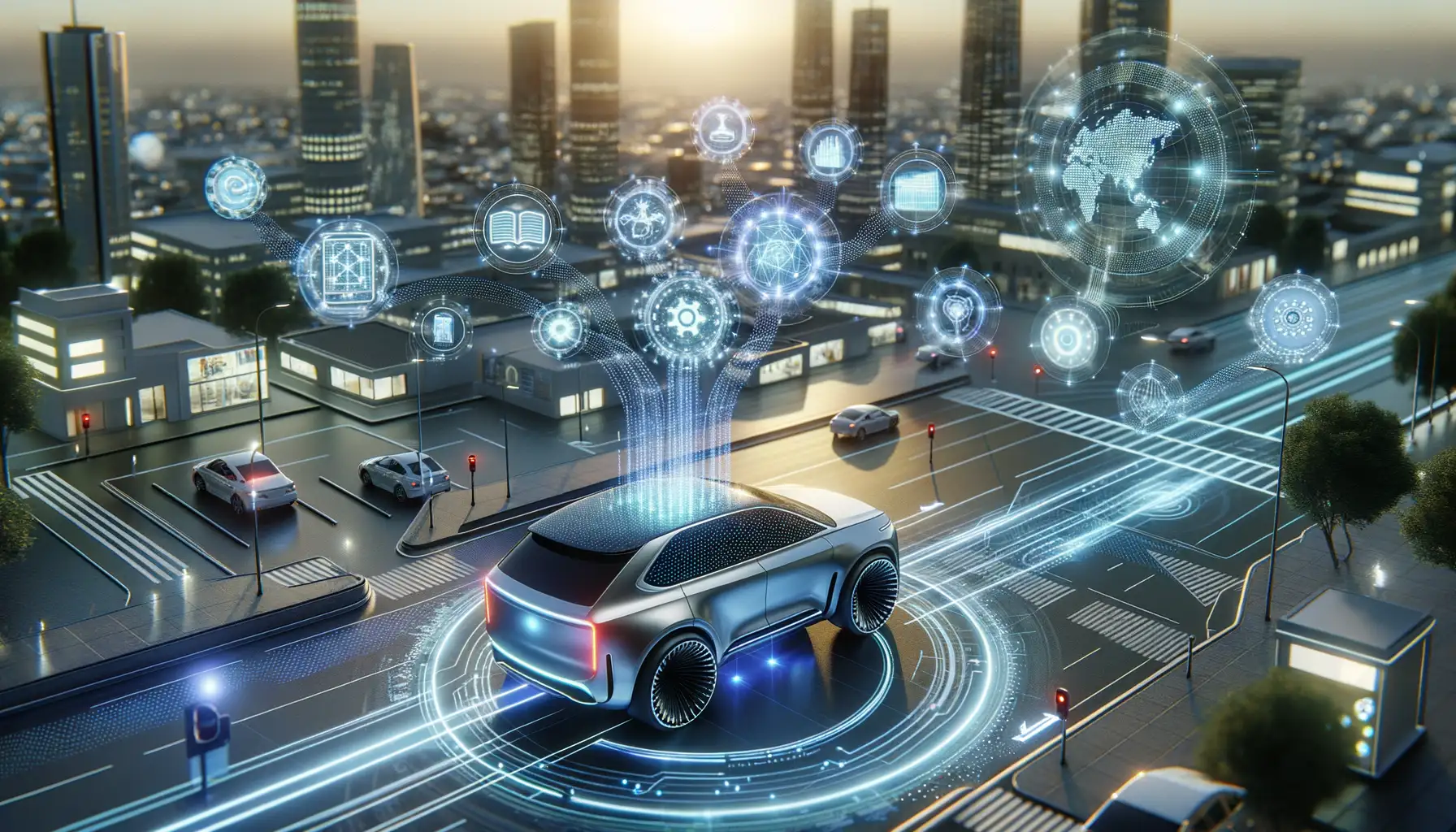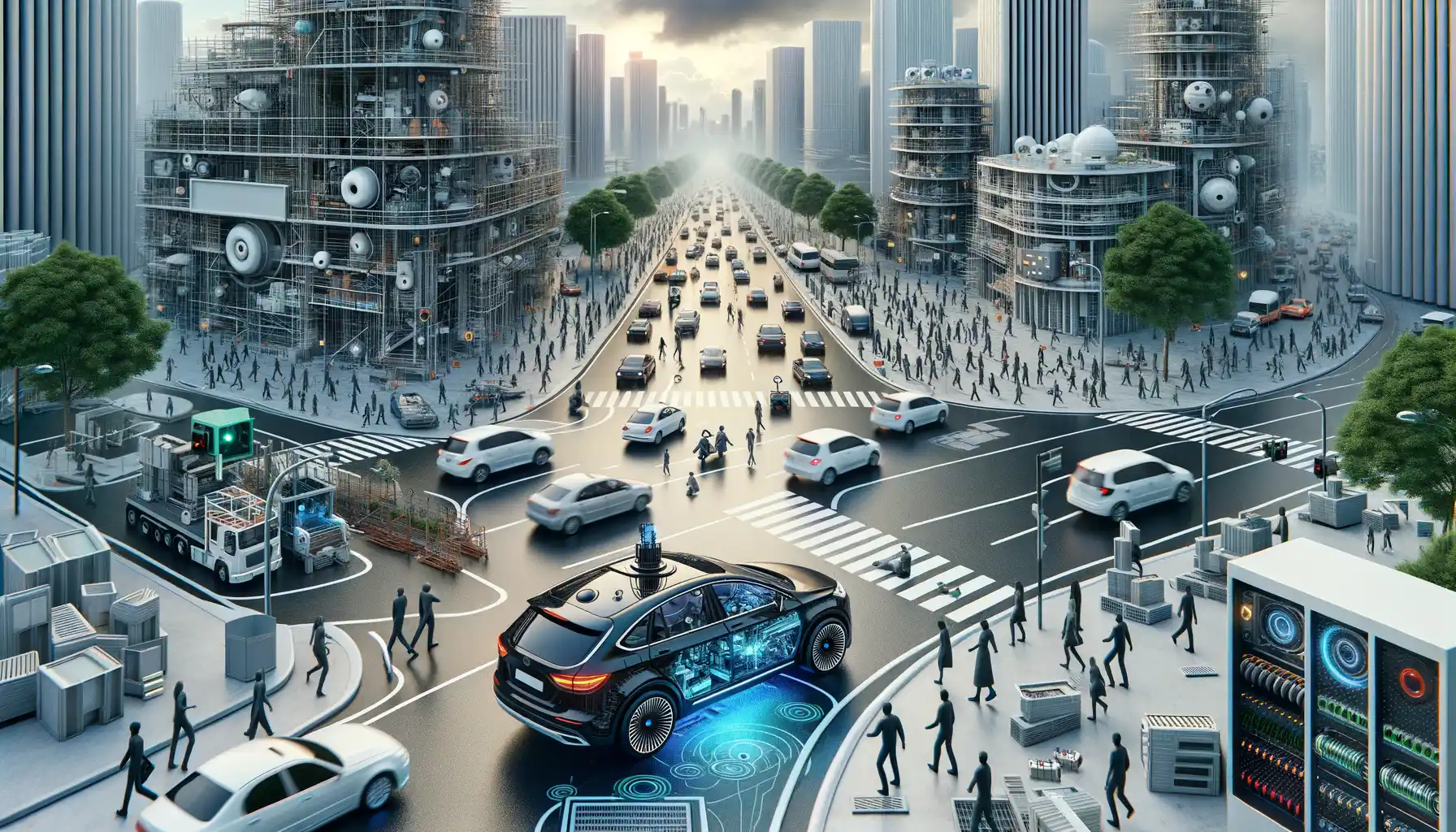Current Role of AI in Autonomous Vehicles
AI: The Brain Behind the Wheel
Imagine your car as a symphony orchestra, and AI as the maestro, flawlessly coordinating sight, sound, and movement to deliver a harmonious ride. Today, artificial intelligence is the beating heart of autonomous vehicles, handling complex tasks that once seemed like science fiction. It’s not just about driving; it’s about understanding.
AI-powered cameras and sensors act as the “eyes,” processing millions of visual data points every second. Is that a pedestrian crossing or just a shadow? AI figures it out in a heartbeat. Meanwhile, the “ears” come in the form of LIDAR systems and radar, determining whether that honking car behind you is a threat or just impatient. And don’t forget the “brain”—the machine learning algorithms that predict human behavior and adapt accordingly.
- Navigate unpredictable urban environments
- Analyze road signs in milliseconds
- Detect sudden obstacles like jaywalking pets or flying trash bags
Each vehicle becomes a rolling genius, learning from its experiences and those of the broader fleet. That’s right—your car might just be smarter than your old high school math teacher!
Key Innovations Shaping the Future of AI in Autonomous Driving

The Rise of AI-Powered Perception Systems
The future of autonomous driving lies in how vehicles “see” the world around them. Imagine a smart car with vision sharper than an eagle’s and reflexes faster than a pro athlete. That’s where innovations like AI-powered perception systems come into play. These systems are evolving to process staggering amounts of data from sensors, cameras, radar, and LIDAR, creating a real-time 3D map of the environment.
What’s new? Advanced neural networks now allow cars to understand complex scenarios—a pedestrian suddenly jaywalking or an erratic cyclist weaving through traffic. The car doesn’t just detect objects; it predicts their next move. That’s right, your future car might be better at reading body language than you are!
- Multi-modal AI: Fusing visual, auditory, and spatial data for hyper-accurate object recognition.
- Edge computing: Instant processing of data onboard the vehicle, cutting response times to milliseconds.
What’s Driving Smarter Decisions?
Your car won’t just drive; it’ll think. Thanks to game-changing updates in reinforcement learning, tomorrow’s vehicles will handle rare, unpredictable scenarios—think flash floods or road accidents—with remarkable grace. By simulating billions of potential outcomes in virtual environments, AI is rewriting the rulebook on decision-making.
Take route optimization, for instance. Got a busy commute? These AIs use swarm intelligence—yes, like bees!—to navigate traffic as efficiently as a Formula 1 pit team. It’s not just about getting there faster; it’s about safer, greener travel too. Your car learns from every trip, constantly upgrading its strategies and making your rides feel seamless. Isn’t that the dream?
Challenges Facing AI Integration in Self-Driving Cars

Technical Roadblocks on the Journey to Autonomy
Integrating AI into self-driving cars isn’t as seamless as plugging in a piece of software and hitting the road. Picture this: a car navigating a bustling intersection with pedestrians jaywalking, cyclists weaving through traffic, and unpredictable weather wreaking havoc on visibility. That’s the battlefield AI faces, and it’s not always victorious.
One of the thorniest challenges lies in the realm of edge cases. These are those rare, head-scratching moments that catch even the smartest algorithms off guard—like a deer sprinting onto a highway or a rogue plastic bag floating across a sensor’s field of view. Training an AI system to recognize and react reliably to such anomalies is like trying to predict the next curveball in a baseball game—it’s tricky and full of surprises.
- Weather woes: Rain, snow, and fog can confuse sensors and cameras.
- Human unpredictability: Sudden lane changes or brake slamming are hard to anticipate.
- Sensor reliability: Hardware failures complicate decision-making.
The Tug-of-War Between Speed and Safety
Now imagine a car has to decide between braking immediately to avoid a collision or swerving into a less-than-ideal lane for safety. This split-second judgment is where the real struggle begins—balancing algorithmic speed with foolproof accuracy.
You might think faster processing power is the magic wand here, but rushing calculations could lead to catastrophic consequences. This isn’t just about crunching numbers; it’s about teaching an AI to think like a cautious driver. For now, we’re stuck in a delicate dance of trade-offs, hoping to tiptoe toward perfection without stumbling over unexpected obstacles along the way.
Ethical and Regulatory Considerations for AI-Powered Vehicles

Putting Morality in the Driver’s Seat
Imagine this: you’re in a self-driving car, gliding peacefully through the streets, when a sudden dilemma arises—a pedestrian leaps into the road. Should the vehicle prioritize your safety as the passenger, or should it swerve to protect the pedestrian, risking damage to everyone inside? These are the heart-wrenching scenarios that push ethical questions to the forefront of AI development for autonomous vehicles.
AI doesn’t have a moral compass, but it does follow rules—rules that we, humans, need to carefully define. Who gets to write these rules? Governments? Automakers? Tech companies? It’s a colossal responsibility. The answers to such questions could set the stage for how trust is built—or shattered—between people and machines.
The Legal Labyrinth
The regulatory landscape for AI-powered vehicles is anything but straightforward. Different countries—and sometimes even different states—treat autonomous cars with separate sets of expectations.
- In Europe, strict data privacy laws like GDPR raise concerns about how self-driving cars process personal information.
- In the United States, companies like Waymo juggle state-by-state rules, creating patchworks of compliance requirements.
- Meanwhile, Japan focuses on crafting harmony between cultural values and advanced technology.
These legal nuances can make or break the scalable success of autonomous vehicles. Developers must navigate not just engineering challenges, but also an evolving web of bureaucracy where a single misstep could slow everything down.
Predictions for the Next Decade in AI and Autonomous Transportation

The AI Revolution on the Roads
Hold on to your seatbelts—because the next decade is poised to transform our relationship with transportation in ways that will make today’s self-driving cars look like flip phones in a world of smartphones. With the breakneck pace of advancements in AI-powered decision-making, the future of autonomous vehicles feels more like science fiction than mere progress.
Imagine vehicles that can not only navigate traffic but also anticipate and adapt to your personal preferences. Running late? Your car might preemptively reroute and adjust the cabin temperature to help keep you calm. Hungry? It might suggest pit stops, factoring in both restaurant wait times and calorie counts.
And that’s just the beginning. Here’s what the road ahead could bring:
- Swarm intelligence: Picture fleets of autonomous cars working in harmony, flowing through cities with zero traffic jams.
- Hyper-specialized vehicles: AI-driven ambulances or delivery drones that react to real-time emergencies with split-second precision.
The stars of this show? Next-gen innovations like edge computing that empower cars to think locally while staying in sync globally. The result? A world where “rush hour” belongs in history books.
From Passive Rides to Seamless Experiences
Say goodbye to passive commutes; the autonomous vehicles of tomorrow will be more akin to rolling personal assistants. As AI gets smarter, your car could act as both a co-pilot and a concierge, learning from your daily habits. Got a playlist you love for morning drives? Say no more. Prefer the scenic route home? It’ll remember.
Then there’s the magic of vehicle-to-everything (V2X) communication. Imagine your car communicating with streetlights, biker helmets, and even weather sensors. Yes, the morning fog won’t be a nuisance when your AI-powered vehicle “talks” to a nearby weather station and adjusts its driving protocols accordingly.
As the decade unfolds, it’s clear that AI isn’t just enhancing autonomous transportation—it’s setting the stage for a world where machines understand us better than ever before.
